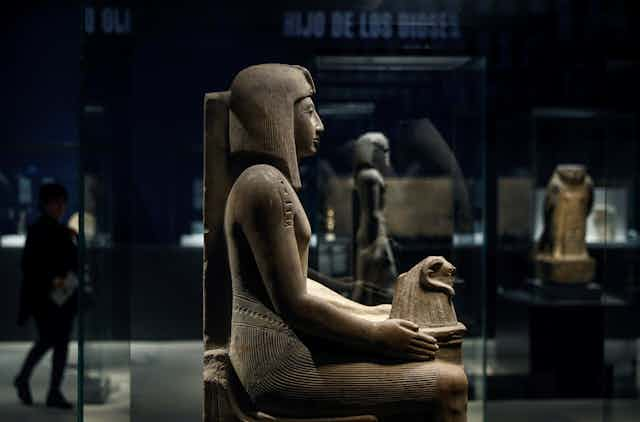When Black Lives Matter protesters in Bristol tore down the statue of a slave trader in summer 2020, it sparked public debate about how the UK handles and presents the darker parts of its history. In response to this, numerous museums and heritage bodies have taken a look at their collections’ links to slavery and empire and the best way to handle them.
Unhappy about the way some have called for removal of contentious items, names and monuments, particularly statues, the government has announced a new “retain and explain” policy. This aims to protect controversial monuments and artefacts from removal, instead asking for more information to be provided about them. As culture secretary Oliver Dowden put it, the policy is an attempt to “defend our culture and history from the noisy minority of activists constantly trying to do Britain down”.
As part of the policy, historic statues are given legal protection independent of whether the public heritage body Historic England has listed them as significant. All historic statues, plaques and other monuments can now only be removed once full planning permission has been obtained, making it difficult to take down controversial monuments.
At first glance, the notion that controversial statues should be explained and contextualised seems like a step in the right direction. However, for many activists and museum workers, this new law might feel like a step backwards. The emphasis of this law is clearly on the museum’s “duty to the nation to conserve and preserve our heritage,” but with a very narrow view of that heritage.
Addressing colonial history
Over the past decade, many museums have been working hard to bring previously ignored histories and voices into the museum space. This process is known as decolonisation. It aims to tell the colonial history of our museums from multiple perspectives and recognises that how we used to collect and display artefacts has had harmful impacts and in some cases continue to reinforce stereotypes.

Simply adding more explanation to these displays is not always enough to combat these long established stereotypes. Museums might not have enough information or even know enough about the cultural practices in question or how the objects were acquired to put them in the appropriate context.
In other cases, only specific aspects of a culture were collected, which sought specifically to reinforce prejudices that they were “primitive” and “savage”, making it difficult to present a balanced view. A good example is the recent decision by the Pitt Rivers Museum in Oxford to remove the “Treatment of Dead Enemies” display, which among other objects held shrunken heads and remains. The decision was prompted by audience research showing that the display was not able to adequately explain the practice, which occurs across several cultures.
Displays of power
To be successful, decolonisation needs to go beyond merely changing labels. It should represent more diverse stories, while at the same time addressing structural racism within our institutions.
According to the Museum Association:
Decolonisation is not simply the relocation of a statue or an object; it is a long-term process that seeks to recognise the integral role of empire in British museums – from their creation to the present day. Decolonisation requires a reappraisal of our institutions and their history and an effort to address colonial structures and approaches to all areas of museum work.
The proposal that monuments must be preserved at any cost falls within a view of heritage that privileges white and upper-class narratives. While there is no comprehensive list of all statues and monuments in the UK, most of them commemorate rich white men. Out of the 610 named statues recorded by the Public Monuments and Sculpture Association, only three are of are of black individuals. Only 4% of London’s Blue Plaques commemorate black and Asian people.
The idea that heritage must be preserved in its current form for an imagined future generation, leaves little room for necessary transformations and change. This long-held idea is one that museums have been trying to move away from as they try to embrace a more activist and active role, in today’s society.
The retain and explain policy fails to acknowledge that heritage and monuments not only represent history but are also displays of power. What we preserve as heritage shows what and who we value as a society. So those who are commemorated in public spaces – and those who are not – signifies who belongs and who does not. An explanatory label or QR code will not change these visual cues.
While contextualising contested history is a step in the right direction, issuing a blanket protection for all monuments, whether listed or not, avoids a meaningful and deeper re-evaluation of the values of our society. It avoids discussion of whether we still feel it is appropriate for controversial statues to be a prominent feature of our cities. Cities and museum do not have an unlimited amount of display space. How can we diversify our heritage if the prime locations are already taken up by the privileged few?

